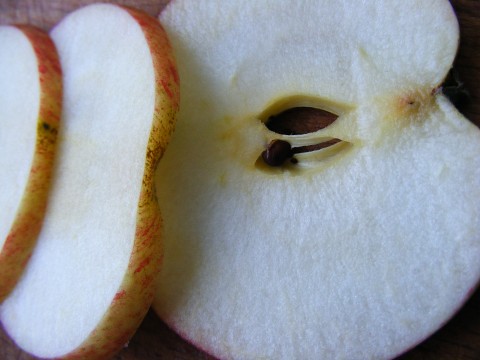Apples offer a wealth of opportunities for hands on learning. Whether your kids are in pre-school or junior high, we’ve put together a collection of experiments that can be tailored to their level of interest and understanding to take playing with apples at home from the craft level to the scientific. More data lets you take the experiments deeper, making many of these ideal for entertaining a larger group of kids if you’re hosting a fall-themed kids’ party.

Watching Rot
No round up of apple science would be complete without a variation of the classic oxidization experiment, and Coffee Cups and Crayons does it best. Rather than simply tossing half and apple with lemon juice and leaving the other raw, they bring in several different variables, inviting a deeper discussion of variables and control groups. There’s room for a great deal of deeper exploration with older children to ask just what it is about certain substances that makes them better at controlling the browning.
Counting Seeds
Mrs. Miner’s Kindergarten Monkey Business is an adorable site with free printable resources for many activities perfect for your younger children. Use her simple, colorable chart to help your kids keep track of how their prediction matches the data when it comes to the number of seeds in their apples. If you’re working with a larger group of kids, help them compile their data into a chart to look at the average predictions, number of seeds, and differences between the two numbers.
Weighing Water
About.com’s Kids’ Learning Activities includes directions for how to measure the water in an apple using nothing but a simple scale and time. The directions include a free printable for a log to help you and your child keep track of how much the apple weighs as it slowly dehydrates. This is a great experiment to pair with making homemade apple chips. Compare how much water apples lose over time at room temperature and in a low oven as a way to discuss rate of evaporation and factors that impact evaporation.
Our Lying Eyes
Education.com offers a simple project using apple juice, food coloring, and unwitting subjects to help your kids see how what we see impacts what we taste. Better for slightly older children, this experiment requires them to conduct interviews with human subjects, making this a perfect activity to introduce challenging topics such as the placebo effect, the ethics of using human subjects and the problems with self-report.